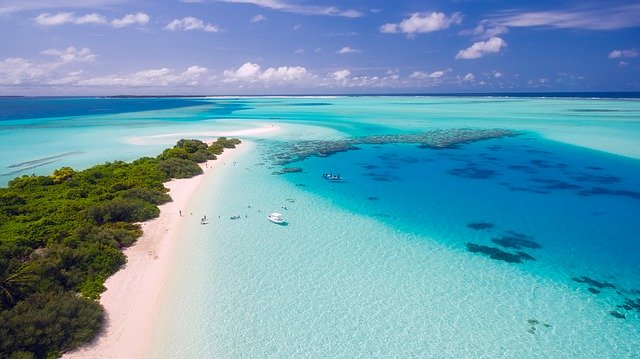
The ocean is massive, mysterious, and truly mesmerizing. People are obsessed with the ocean. There are close to 20,000 songs that mention the ocean, hundreds of movies and documentaries, thousands of quotes throughout history, and more. Millions of people view the ocean as their artistic muse and millions more depend on it for their careers. Millions of people visit the ocean every year and, according to Statista, 52% of Americans say that the ideal vacation is hitting the beach. An additional 30% said that they’d prefer to take a cruise. Also, while it isn’t very popular as a name, there are a couple of thousand people in the world named Ocean. There is just something about it that draws people in.
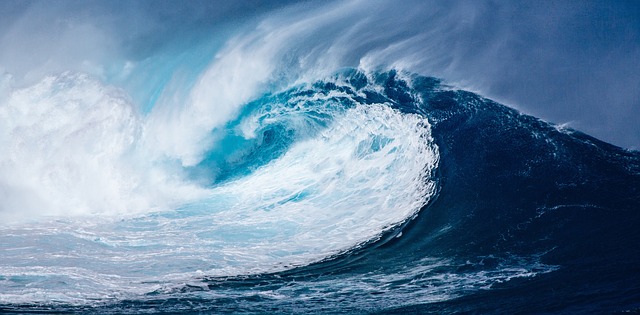
Even though the ocean is so massive and influential, it is still easy to take it for granted. There are roughly three million people in the United States alone that have jobs that depend on the ocean; this doesn’t include peripheral jobs like teachers of marine science, either. Thus, the ocean is responsible for between 2-3% of all American jobs. There are six economic sectors in America that depend on the ocean and they make up what is called the ocean economy. The ocean economy contributes over $350 billion to the United States’ Gross Domestic Product (GDP) each year.
It is also a major influence on the climate and the weather, no matter where you live. Water is a great conductor of heat and the ocean stores a lot of it, slowly releasing it over the colder months. This regulates the temperature all over the planet; this heat storage is also what causes coastal climates to be more temperate all year round. Transportation, recreation, the food we eat, the economy, and so many other things just would not be the same without the ocean. Of course, the majority of the planet is covered by it, so it makes sense. But, it’s hard to picture how greatly we are impacted by it every single day. In fact, 71% of the Earth’s surface is covered by the ocean and it contains 97% of all of the water on Earth.
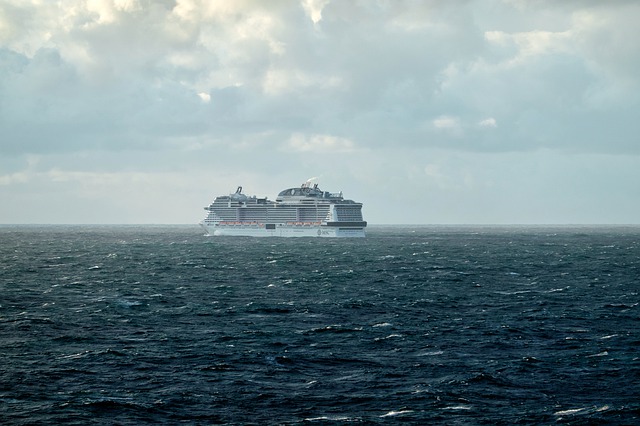
The ocean is often referred to as “the seven seas.” This is because there are seven major oceanic bodies of water which are the Arctic Ocean, the North Atlantic Ocean, the South Atlantic Ocean, the Indian Ocean, the North Pacific Ocean, the South Pacific Ocean, and the Antarctic Ocean. Sometimes this is simplified down to just include the Arctic, Atlantic, Indian, Pacific, and Southern Oceans, too. The truth is, there is only one global ocean. There may only be one ocean in the galaxy, too. Scientists believe that Earth is the only planet that has an ocean at all.
The ocean is so vast that it is easier to divide it into regions but, the oceans are just one vast body of water that covers the Earth. The term “seven seas” is even more of a misnomer given the fact that a sea is not the same as an ocean. A sea is an area of an ocean that is smaller and typically has less depth. They are still very large and they fall into the frame of the ocean, which connects them all together, but the two terms are not interchangeable as they are often considered to be.
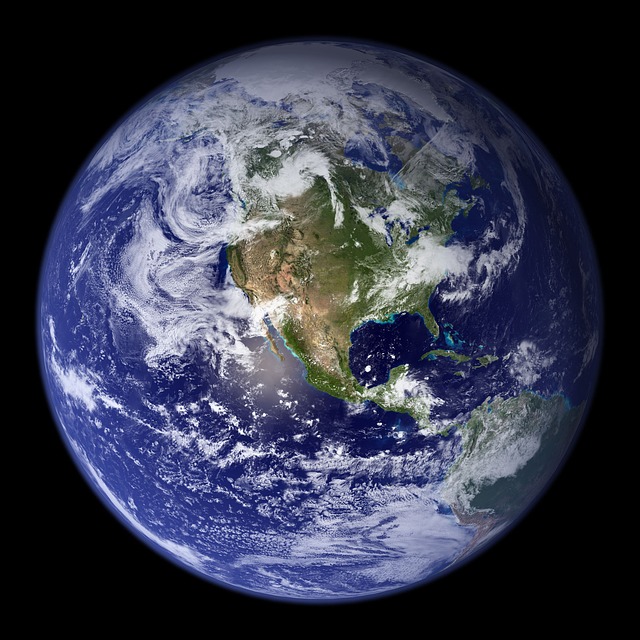
Thalassophiles and thalassophobes alike fixate on the ocean but, the truth is that there is not a lot that they know about it. It may sound like a catchy fact that people like to parrot just to simplify how little we know, but it is true that we have explored less than 5% of the ocean. Greater than 80% of the ocean is completely unmapped and unobserved.
Ocean exploration first began in 5000 BCE when the first sailing vessels were created and a lot of advancements were made given the lack of technology of the time. Deep diving didn’t become possible until around 1700 AD, though and deep-sea life wasn’t discovered until the next century. Scientists began mapping the floor of the ocean throughout the 1900s, particularly after World War II. The National Oceanographic and Atmospheric Administration (NOAA), the greatest scientific authority on the ocean, was founded in 1970.
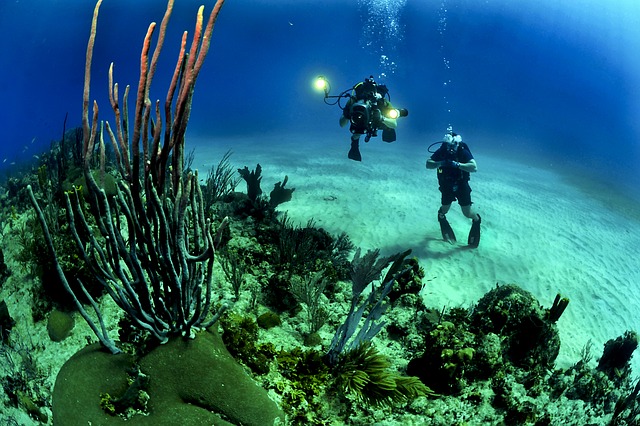
Even though technology has been advancing more rapidly over the past few decades than any other time in human history, exploring the ocean remains very difficult. Satellites are a great tool when it comes to the surface, but they don’t do us any good deeper than that. Going deeper, the challenges mount against researchers and their tools. Beyond the first tenth of a mile, the amount of light begins to steeply decline. Just over half a mile down, the ocean is completely dark. The lack of light, coupled with the extreme pressure and temperature of the water makes ocean exploration extremely difficult for even the most advanced equipment.
Ocean exploration is limited because it’s so dangerous and a truly complex process. Even still, we do know quite a lot about the briny deep. A lot more than most people realize. Of course, that means that there are some truly fascinating things about the ocean that you may have never heard before. In this article, we’re going to look at some of those things. So, here are fifty amazing facts about our oceans!
1. Most of The World’s Major Cities Are Near the Sea

Historically, it makes sense that a lot of development happened around the coast. There are plenty of reasons why this is true. Living near the ocean provides economic and ecological benefits. Development of cities near the ocean allowed the population to have easier access to food and transportation and, it may have been hard for early settlers and explorers to push too far inland. Because of that, now most of the world’s major cities are near the water. Of the ten largest cities in the world, eight of them are coastal cities.
40% of the worlds’ population reportedly lives within an hour’s drive to the nearest ocean. According to the Census Bureau, about 95 million Americans live close to the coast. What’s amazing is that even though less than half of the United States borders an ocean (just 23 states), there are about 89,000 miles of coastline in the country. The amount of Americans that live near the ocean continues to increase as well, at a rate of over 10% per year. Eight out of the ten most popular states that retirees relocate to border an ocean. Construction booms and the tourism industry also continue to drive people to the coast. These areas are statistically more diverse and have higher wages, despite typically higher costs of living.
2. Almost Half of Earth’s Surface is Considered “The High Seas”
International waters are known by a few different nicknames but, the most popular one is the High Seas. These areas are ones that exist beyond the limits of national jurisdiction and they cover an estimated 50% of the planet. That is just under 89 million square miles compared to the Earth’s entire surface, which is about 197 million square miles. This area of the ocean is one of the least protected on the planet, too, despite the fact that the majority of marine life exists there. That is because the High Seas belong to everyone and no one all at once. No individual nation has jurisdiction there.
In addition to the lack of environmental protections, legal protections are spotty out there as well. They are not completely lawless as many people believe, thanks to the United Nations Law of the Sea Convention. This is basically the “Constitution of the Ocean” and it has been in steady negotiation since the ’90s. Several countries, including the United States, have yet to sign it, though. Most of the time, it is generally accepted that the country of origin for each vessel is responsible for all legal matters pertaining to it; however, not every government is willing to honor the legal authority of another.
3. There Are Close to 3,000,000 Shipwrecks In There
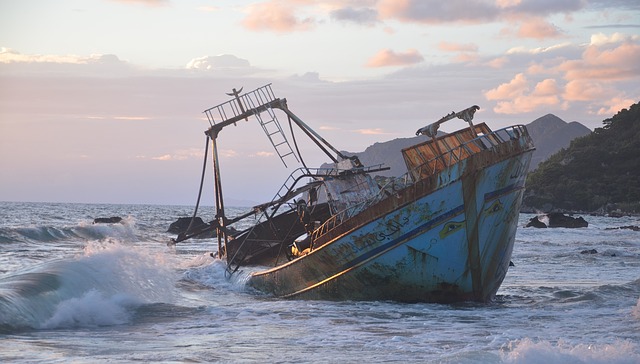
As far as we know, hundreds of people have gone missing at sea. According to a report published from the Memorial University of Newfoundland in Canada, there have been about 300 people that have gone missing from cruise ships alone over the past two decades. What’s more, roughly 25 ships sink or go missing each year. When you take that into account, it makes it a little bit easier to believe that there are an estimated three million shipwrecks littering the ocean floor.
The estimate comes from the United Nations but it is generally agreed upon by a number of research bodies and other authorities. This number includes all vessels that have ever wrecked and sunk, dating back as far as 10,000 years. What’s interesting about the estimate is that, on average, we have explored less than one percent of all of those wrecks. Many of them, we have no idea where they’re even located. Most of the shipwrecks that have been located were found on accident by fishing boats, sonar operators looking for other things in the water, and even during the search for the missing Malaysia Airlines Flight 370.
4. It Takes 1,000 Years for Water to Travel All the Way Around Earth
The ocean is not still water, no matter where you happen to go. Thermohaline circulation takes place because of differences in the density of the water based on the temperature and salinity, which vary wildly in different areas of the water. That type of circulation takes place deep below the surface of the water. Above the surface of the ocean, the wind drives currents. These two factors keep the ocean moving and form what we know as the global ocean conveyor belt. This process starts in the Norwegian Sea, where cool water sinks to the ocean floor.
Warm water moves in from the Gulf Stream and causes the cold water to sink and begin to flow south, all the way down to Antarctica. Eventually, that water is stirred back up to the surface and heated, traveling north once again. There is a lot of different information from multiple sources but, it is generally believed that it takes about 1,000 years for this cycle to complete. That means that one section of the belt or one parcel of water can take that long to return to where it “started.”
5. The Oceans Are Changing In Size
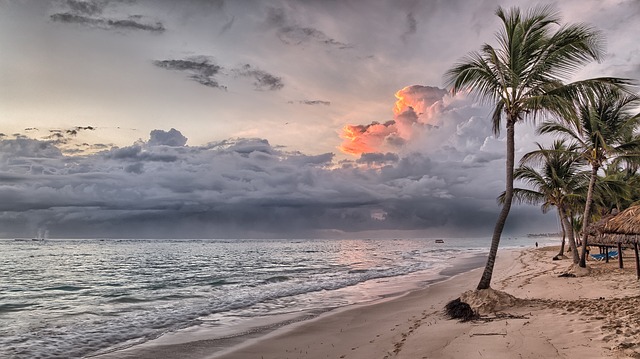
Science estimates that around 20 million years ago, the Atlantic Ocean didn’t exist. Back then, there was a valley that separated the continents which eventually became the ocean basin we know today as the Atlantic. All of this shifting occurs thanks to several factors, such as plate tectonics and underwater volcanoes. Science shows that the Atlantic Ocean is still growing today because of something known as sea-floor spreading from the Mid-Atlantic Ridge, which you will read more about down below.
The Pacific Ocean is also changing in size, as well. It is much older than the Atlantic and it is said to be shrinking with its age. In a particular area, the seafloor is folding under itself thanks to something called subduction. The Pacific plate is moving under other tectonic plates, forcing part of the ocean’s floor to sink. The Pacific Ocean has three of these so-called subduction zones, which can be easily mapped out by the “Ring of Fire.” The Ring of Fire is an area in the Pacific where a large number of earthquakes and volcanic eruptions occur.
6. The Pacific Ocean is The Largest
Despite the fact that it is getting smaller, the Pacific Ocean is the largest and deepest ocean basin on the planet. It is also the oldest; some of the rocks on the floor of the Pacific can be traced back to about 200 million years ago. However, it is believed that some of the oldest parts of the seafloor have already subducted, which as you just read is still happening today. The Pacific Ocean was originally part of the Panthalassic Ocean that existed before Pangea broke up into the separate continents we have today.
The Pacific Ocean covers an incredible 63 million square miles, which is significantly more than the Atlantic Ocean. The Atlantic is the second-largest and comes in just over 41 million square miles. Based on the total amount of space it takes up, the Pacific Ocean contains over half of the water on Earth and could fit all of the continents in it. The deepest parts of the ocean can be found in the Pacific and, interestingly, the average depth of the Pacific is slightly deeper than the average depth of the ocean as a whole.
7. The Pacific Ocean Is Wider Than The Moon
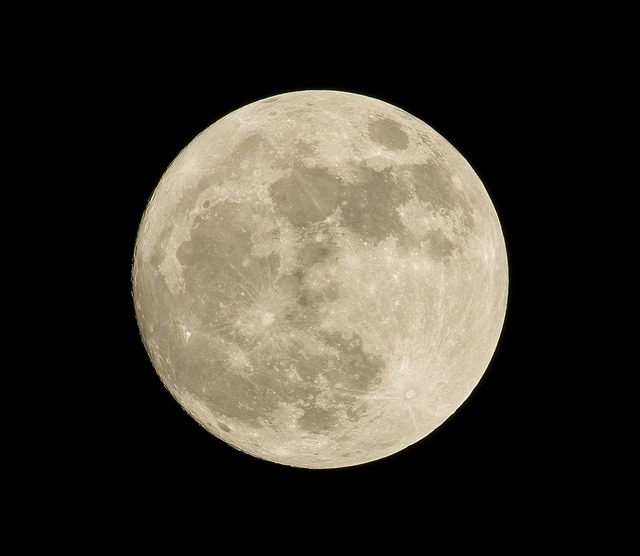
There are a total of 42 countries and 23 territories that border the Pacific Ocean. The Pacific stretches from Antarctica all the way up to the Bering Strait between Alaska and Russia. It also borders California, the continent of Africa, Australia, and Japan. As you read before, it is the largest ocean on Earth. At its widest point, from Indonesia to Colombia, it spans 12,300 miles.
The moon is just about 2,156 miles in diameter. That means that the Pacific is significantly wider than the moon. In addition, the moon’s surface area is about 14.6 million square miles, which is less than one-quarter of the surface area of the Pacific Ocean. It really puts in perspective how large not only the ocean really is, but how large the planet is. Perhaps, it’s not as small of a world as technology has conditioned us to believe.
8. You Can See The Great Barrier Reef From The Moon
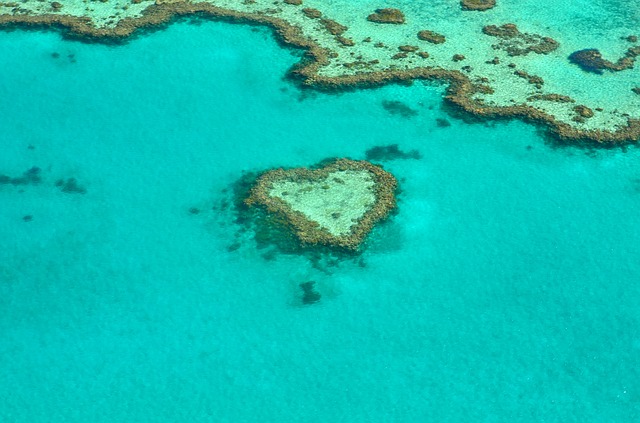
The Great Barrier Reef is one of the seven natural wonders of the world and it is just off the coast of Australia. It is a coral reef and it is about the size of a whopping 70,000,000 football fields! There are thousands of individual reefs that make up the Great Barrier Reef and it is home to millions of different sea creatures. 10% of all species of fish and 25% of all known marine species find their home or their food in the Great Barrier Reef. It is the largest living structure on Earth.
Environmental changes and human interference have greatly harmed the reef over the past few years. Rising sea temperatures have a severe negative impact on the reef; however, it is showing signs of recovery. While its own natural recovery is slow, scientists are also doing research into how they can help preserve this incredible part of our ocean’s ecosystem. The Great Barrier Reef spans precisely 134,634 square miles of ocean, near Queensland, Australia. Due to its size, it is visible from as far away as the moon.
9. The Moon Has Had More Visitors Than The Depths of The Ocean
Speaking of the moon, over the course of history a total of 12 astronauts have ever set foot on the moon. In contrast, only three people have ever gone down to visit what is known as the hadal zone in the ocean. The ocean is divided into multiple zones and the deepest part of it, beginning at 20,000 feet all the way to the bottom, is called the hadal zone. It draws its name from Hades, the god of the underworld in Greek mythology. Exploration at that depth has proved itself to be nearly impossible.
An incalculable amount of equipment has been lost to the hadal zone because of the immense water pressure at those depths. These areas of the ocean are extremely remote and dark, as well. Many pieces of equipment implode or break apart before they can traverse the depths of the area or return to the surface. The first two people who made it that far were a pair of scientists back in 1960. Since then, the only other person who has been down there was the film director James Cameron, who went in 2012. He currently holds the record for the deepest solo dive ever completed.
10. We Have Explored More of Space Than We Have The Ocean
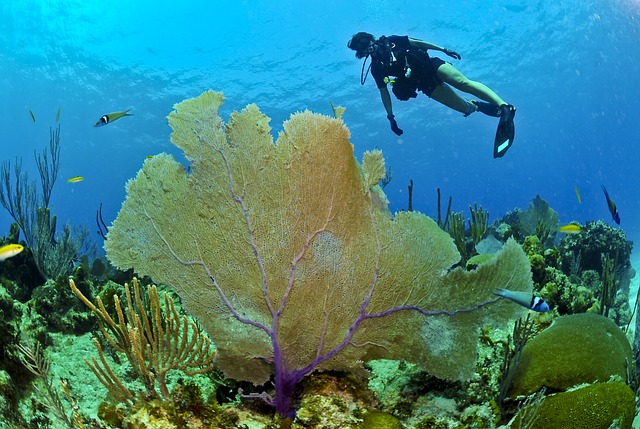
Even NASA refers to the ocean as The Great Unknown, and for good reason. Did you know that we have explored more in space than we have of the ocean? Because of the complications of going so deep underwater, much of what we know about the ocean floor has come from the use of sonar and other technology. Even then, less than 10% of the entire ocean has been mapped using this technology. That means, we have better maps of Mars.
We have a better understanding of space in general when compared to the ocean. Even though ocean exploration began centuries prior, it is easier to launch people into space than it is to get them to the depths of the ocean. Satellites, rovers, and telescopes also can be used to explore the areas of space that we have yet to send any astronauts. Scientists don’t have the same luxury with the ocean. Technology is constantly being developed but even the most promising looking devices have been completely destroyed when they make it down there.
11. The Average Depth of The Ocean is Over Two Miles
The ocean is divided up into zones, as you read before. Those zones have scientific names but we’re just going to go over them by their nickname for the sake of simplicity. There is the Sunlight Zone, which stretches down about 200 meters; below that is the Twilight Zone, which goes down 1,000 meters. That is the deepest area of the ocean that light can reach, and beyond the Sunlight Zone, visibility is greatly limited. Even further down, up to 4,000 meters, there is the Midnight Zone; below the Midnight Zone is The Abyss, which extends 6,000 meters. Finally, there is the Hadal Zone or the Trenches, which extend as far as 11,000 meters below the surface.
Because of the way that we think about the ocean, it can be hard to imagine how deep it truly is. Some areas, which you’ll read about later on, could hold the entirety of Mount Everest and still have room to spare! However, the overall average depth of the ocean is between 12,100 and 12,400 feet, depending on the source. This is 2.34 miles! Different oceans have different average depths, too, based on the topography of their floors. For instance, the Pacific Ocean is closer to two and a half miles deep on average whereas the Atlantic Ocean is closer to just two miles.
12. The Bottom of The Ocean is Warmer Than You Think
The bottom of the ocean is still unbearably cold for most people, camping out around 39 degrees Fahrenheit. Even though that’s still pretty cold, most people tend to think that the ocean’s floor is much colder. In the deepest parts of the ocean, temperatures typically range from 35 to 37 degrees but, there are some areas that may be notably warmer. An estimated 8% of the ocean floor is over 40 degrees.
The ocean is so cold at its depths for a few reasons. The sun can’t reach beyond the top 25% of the water, which means that no warmth can come from the sun past that point. Cold water is also much more dense, so it sinks rapidly to the bottom of the ocean. However, there are hydrothermal vents on the ocean floor. These are like hot springs or geysers, and they can push very hot water right into the deepest parts of the ocean, which results in some parts of the ocean’s floor being significantly warmer. This hot water quickly mixes with the cold water that’s already down there, but it does bring up the average temperature.
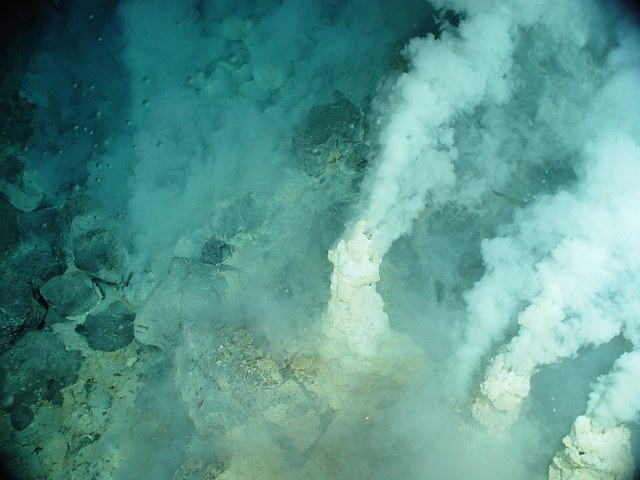
13. Some Hot Springs In The Ocean Reach Roughly 750 Degrees
Those hydrothermal vents on the ocean floor were first discovered in 1977. Down on the floor of the ocean where tectonic plates don’t line up just right, magma seeps up and cools down to form more crust and even mountains. Because of the way water is always moving in the ocean, it can get trapped under the crust down there and that causes it to get heated by the magma. When that pressure gets to be too much, geysers form on the seafloor.
These hydrothermal vents are typically all unique. They have their own ecosystems, despite the immense pressure, heat, and mineral concentrations of the waters they emit. There are all different kinds of these vents on the floor of the ocean, jetting hot water into the hadal and abyssal zones. Some of the water coming out of these vents can reach an astounding 750 degrees Fahrenheit. The hottest water ever discovered from one of these vents was over 867 degrees and it was able to sustain that temperature for 20 seconds.
14. The Deepest Part of The Ocean is Over Seven Miles
The hadal zone of the ocean is littered with trenches that span unbelievable depths. The deepest known part of the ocean is known as the Mariana Trench, and it can be found in the western Pacific Ocean. This trench is over 1,500 miles long and spans about 43 miles across on average. These trenches are basically scars in the crust of the Earth and they form because of the way that tectonic plates collide. The impact drives one of the plates deep beneath the other, into the mantle, leaving the trench.
This is the deepest, darkest, coldest, and most dangerous part of the ocean. In 1951 when it was discovered, an echo-sounder was used to measure its depth and found that it was close to 11,000 meters. This is just about seven miles. Mount Everest is known as the highest point on Earth because it is the highest elevation above sea level. If you were to drop the entire mountain into Mariana Trench, you would still have over a mile between the tip of the mountain and the top of the trench. As you read before, only three people have ever made it to this part of the ocean.
15. The Weight At the Bottom of the Ocean Would Crush You
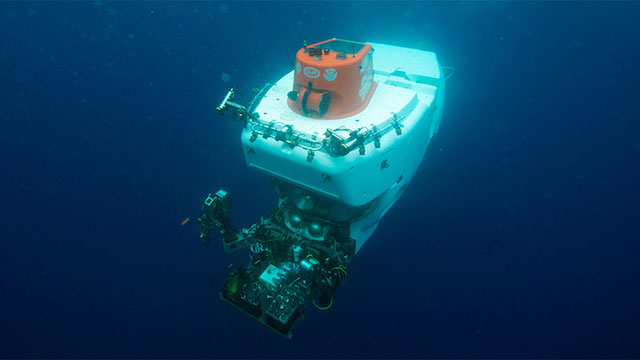
Part of the reason why it is so difficult to explore the deeper parts of the ocean is the pressure. The air is constantly putting pressure on us. At sea level, the pressure is about 15 pounds per square inch. We aren’t able to feel that pressure because of the way our bodies work. The fluids inside us push out with the same amount of force. However, the pressure underwater is enough to completely crush you long before you could ever reach the bottom.
For every ten meters or so you go underwater, there is an increase in pressure equal to about 15 psi. Even though these are just approximations, you can see how the pressure can quickly become a problem. At the deepest part of the ocean, the pressure has been measured to be equal to 15,750 psi. The human body can tolerate a blast of pressure that is equal to 50 psi. You would probably scrape through with minor injuries to your ears and lungs. If the pressure is sustained rather than being a sudden impact, our bodies can handle up to 400 psi. The pressure at the bottom of the ocean is roughly equivalent to having 50 jets stacked on top of your body.
16. The Ocean Contains The Largest Waterfall On Earth
There is a lot going on in the ocean that you may not know about. For instance, the bottom of the ocean is like its very own world and it has a lot of the topographical things that we see above ground as well. Because of the vastness of the ocean, a lot of these things are quite a lot larger than what we see here on the surface as well. The tallest waterfall is Angel Falls. They are located in a beautiful part of Venezuela and have a drop of over 3,000 feet. However, it still isn’t the largest waterfall on Earth.
That designation goes to a waterfall located in the Denmark Strait. This area of the ocean between Greenland and Iceland has a waterfall that plunges over 11,000 feet down. The water falls more than a thousand times faster than the average flow of the Niagara Falls.
17. There Are Canyons Underwater Larger Than The Grand Canyon
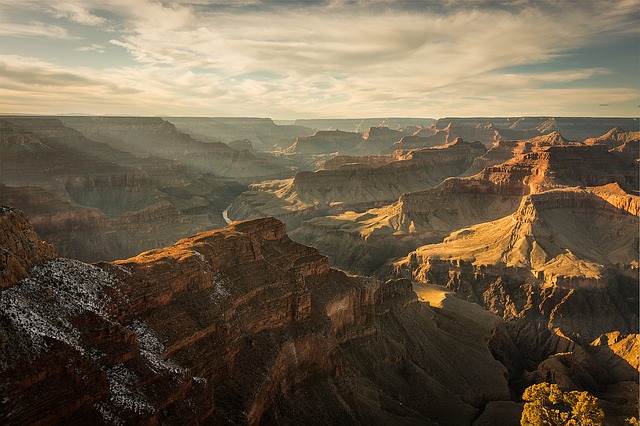
The Grand Canyon in Arizona is considered the largest and the Yarlung Tsangpo Canyon in Tibet is considered the deepest; however, there are submarine canyons that would make both of them look small. Canyons under the ocean are different from trenches. Trenches usually run parallel to the shorelines and are hidden in very deep water. Submarine canyons, which is what underwater canyons are called, tend to run perpendicular to shorelines and can start in more shallow waters.
So far, there are 11 major submarine canyons that have been discovered. The deepest and widest canyon in the ocean is called the Zhemchug Canyon. It is about five miles deeper than the Grand Canyon and is so large that you can only see it in its entirety from space. The largest submarine canyon ever discovered, the Bering Canyon has almost three times as much area as the Zhemchug.
18. The Mid-Oceanic Ridge is Over 40,000 Miles of Mountains
The Mid-Oceanic Ridge is the most extensive chain of mountains on the planet. It spans an impressive 40,390 miles. For a quick comparison, the Andes is the longest mountain range above water and they span just 4,300 miles in total. These mountains are formed by volcanic eruptions that take place underwater and because of this, they are continuing to grow with time.
This mountain range wraps all around the Earth, weaving between continents. On average, the tops of its ridges are about a mile and a half underwater and the majority of the ridge is underwater. Half of these mountains have been mapped using the available technology; however, just like with much of the rest of the ocean, it is widely unexplored. Less than 1% of the entire range of mountains has been explored with submersibles or underwater rovers. This is the largest mountain range on Earth.
19. There Are Also Lakes and Rivers In The Ocean
Now that you know that the ocean floor is just as diverse as what we can see above ground, it may be slightly less surprising that you can find lakes and rivers down under the ocean as well. They very closely mirror those that we have up here on land, too. They have their own ecosystems, shorelines, and even their own patterns of waves that different from the rest of the ocean.
The rivers and lakes that are formed under the ocean happen because of differences in density and salinity. There are layers of salt beneath the seafloor and the water that travels up through them dissolves the salt and causes it to collapse in some areas. This leaves reservoirs and makes the rising water saltier than the water around it, thus making it denser. It settles into the reservoirs to form these underwater bodies of water and because of the differences in density, it is able to remain observably separate.
20. The Antarctic Ice Sheet is Larger Than The United States
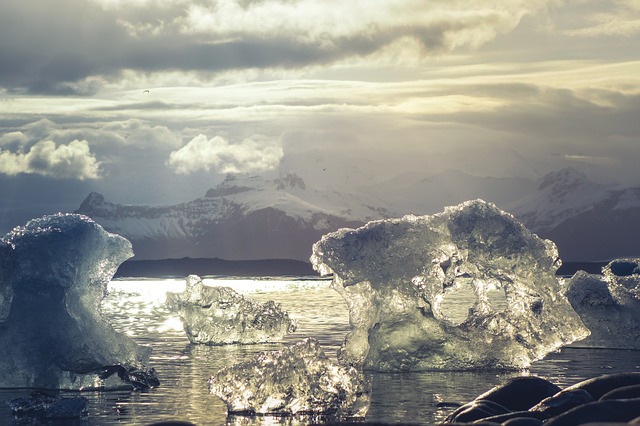
There are two major ice sheets on Earth, which are masses of glacial land ice. These sheets cover the majority of Greenland and Antarctica and they are much larger than you might think. Together, they contain millions of cubic miles of ice. The Antarctic ice sheet has an area of about 5.4 million square miles, which is larger than the contiguous United States. The Greenland ice sheet is much smaller, but still is “three times the size of Texas.”
Ice sheets are formed by snow. When snow falls during the winter and doesn’t entirely melt, these layers of snow can continue to pile up over thousands of years, condensing over time to form large masses of ice. The two major ice sheets on Earth contain greater than 99% of all of the fresh water that can be found on the planet. They play a significant role in the weather that we experience all around the world, as well. If both of these ice sheets melted, science estimates that sea levels would rise as much as 220 feet. Just a ten-foot rise would wipe out close to 29,000 square miles of the US.
21. Almost All International Trade Goes Across The Ocean
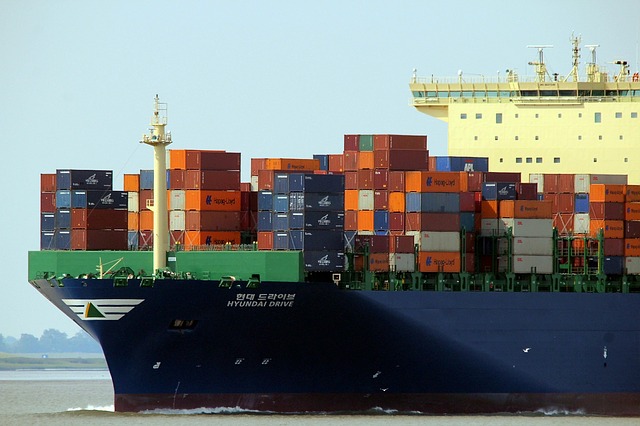
The ocean plays a major role in our economy. According to the World Economic Forum, the ocean contributes $70 trillion to the global gross domestic product or GDP every year. Moving goods by ship is the most economically efficient way to transport them to other continents and because of that, 90% of the world’s trade is carried by sea. More than half of all goods imported to the United States arrive by ships and, about 38% of what our country exports is carried out by ships. Globally, there are around 53,000 merchant ships that carry cargo between nations.
22. More Than Half of Our Oxygen Comes From the Ocean
Most people are raised believing that most of our oxygen is provided by trees. Trees are extremely important because of the oxygen that they provide us; however, the ocean is responsible for most of the air we breathe. The ocean is full of organisms called phytoplankton, which are microscopic types of algae.
This alga sustains itself using photosynthesis, the process of absorbing sunlight and using it to synthesize food from water and carbon dioxide. As you probably know, oxygen is a byproduct of this process. 70% of all oxygen on Earth is produced by phytoplankton and the majority of the remainder of our oxygen comes from rainforests.
23. Almost Half of Earth’s Population Depend on the Ocean for Food

A lot of the more luxurious foods eaten around the world come from the ocean, such as lobster and shrimp. Seafood consumption has been steadily rising for decades as people around the globe become more health-conscious. However, there are some places in the world that eat seafood for other reasons. There are some countries that can’t afford to raise or import chickens or other animal food sources. Especially in more remote areas of the world, the ocean is the cheapest way to source food. It is estimated that 3.2 billion people depend on the ocean as a food source.
Experts also estimate that this number is going to continue to rise. Increases in seafood consumption per year are measured in tons, sometimes millions of tons per year. Currently, the biggest consumers of seafood are China, Myanmar, and Vietnam; these countries consume more than a million tons of seafood per year. China is the largest consumer of seafood, averaging over two million tons annually.
24. More Than a Tenth of All Protein We Consume is From Fish
Fish is extremely good for you as a food source. They provide protein, fatty acids, iodine, selenium, and a lot of other essential vitamins. Between 14% to 17% of all the protein the world consumes comes from fish. This has been steadily rising over the past two decades. Over half of the world’s population gets 15% or more of all of their protein from fish. Most nutritional guidelines from around the world state that people should consume at least two portions of fish each week. The average American eats about 16 pounds of fish each year.
When compared to other animal proteins, fish is considered superior because of the additional vital nutrients that it provides us. Chicken comes in a close second, with red meat trailing significantly behind.
25. We Get A Lot of Important Medications From The Ocean, Too
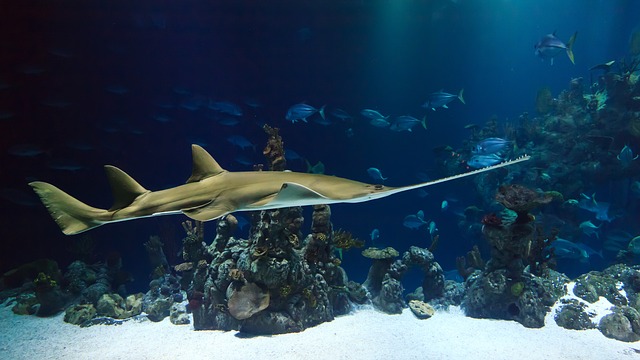
The majority of the drugs that we get from natural sources do come from land-based or terrestrial sources; however, we do still get important medications from the ocean. Ecteinascidin, discodermalide, and bryostatin are chemicals that we get from sea organisms that have shown some promise when it comes to treating different types of cancer and helping to fight tumors.
Pseudopterosins are another type of chemical that comes from a creature called a sea whip, and these are anti-inflammatory and analgesic agents that are great for fighting inflammation, relieving pain, stopping skin irritation, and accelerating the healing of wounds. W-conotoxin MVIIA comes from the cone snail, and it is an extremely powerful pain reliever. Except for the cone snail, all of the creatures where we can find these chemicals are non-moving invertebrates. Research has shown that marine invertebrates like these produce more antibiotics, cancer-fighting, and anti-inflammatory substances than any other type of organism.
26. Close To 95% of Life on Earth is in The Ocean
As you know, the majority of the Earth is made up of the ocean. It has been said that 99% of the living space on the planet is contained underwater. Because of the vast amount of different species that lurk under the surface of the ocean, as much as 95% of all life on Earth is in the ocean.
As of right now, there are almost a quarter of a million different species that are known to live in the ocean and experts estimate that an additional two million have yet to be discovered. In just one drop of ocean water, you’d find ten million viruses, one million different types of bacteria, and over a thousand microorganisms like phytoplankton and others. Because of that, almost all life is in the ocean.
27. Marine Life is Twice as Diverse as Land Animals
Like you read above, there are almost a quarter of a million different known species in the ocean. About 17,000 different species live past the abyssal and hadal zones, and that’s just what we know of. While those are insanely large numbers, there are still more terrestrial species, that is those that live on land. Up here, we have almost six and a half million different known species and, just like underwater, more are being discovered all the time. Even though there are more different types of animals live above ground, the ocean is still way ahead of us when it comes to biodiversity.
The majority of major groups of species that we know of exist in the ocean, and the life in the ocean is more widely varied than what we can observe above ground. The diversity of major groups of organisms is greater in the water. The ocean also contains organisms at more varied levels of the food chain than we can observe on land.
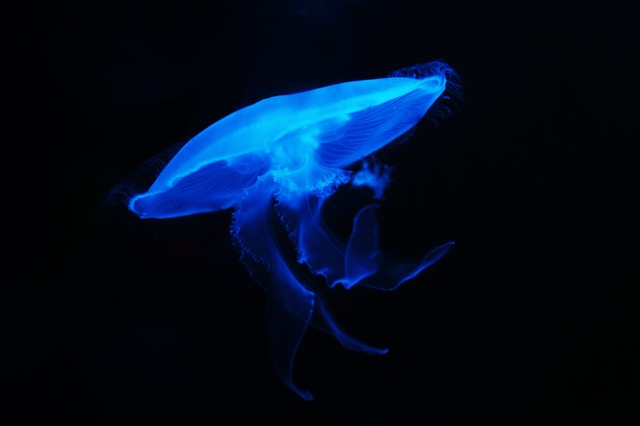
28. Most Deep-Sea Fish Glow in the Dark
Bioluminescence is absolutely beautiful to observe. Chemical reactions that take place in the body of some living organisms allows them to create their own light, causing them to glow. It is less common up here on the surface, but fish that live deep in the ocean have adapted to the lack of light in the briny deep by creating their own. One of the most common animals that might come to mind is the angler fish, which is… decidedly far from beautiful.
However, there are tons of fish, jellyfish, and squid that are far more pleasing to the eye. It isn’t even reserved for the deeper parts of the ocean either. In Puerto Rico, the Maldives, and even Oregon, there are so-called glowing beaches. Planktonic organisms that live in the surface parts of the ocean luminesce with the movement of the water, creating a beautiful effect in the water that mimics the Northern Lights.
29. And, Most Arctic Fish Have Developed Natural Antifreeze
The darkness isn’t the only thing that some sea creatures need to adapt to. Some parts of the ocean are also extremely cold. While it was thought that these areas would be devoid of life, there are some species of fish that have created what is essentially natural antifreeze.
About 20 million years ago is when the waters of the Arctic began to get as cold as they are now and it killed off most of the creatures that had previously been able to survive there just fine. However, there was one type of fish that survived and eventually spawned several other types of fish that now thrive in the frigid water. These fish have adapted to have a glycoprotein in their blood that lowered the freezing point of their blood and allow them to live and eventually diversify the freezing water. They are known as the notothenioid fishes, a sub-order named for their common ancestor.
30. Some Sea Life Sustains Itself By Chemical Energy Instead of Light
Photosynthesis is the well-documented process through which organisms use sunlight to make the nutrients that they need to survive. It is how countless organisms survive and it is critical to all life on Earth because it produces our oxygen for us. However, deep under the surface of the ocean, there is no sunlight. The sun can’t reach past about a thousand meters into the ocean but significant light can’t really get past 200 meters. Organisms in the ocean are extremely adaptable, though, as you’ve already learned.
There are some organisms that have created a new process, which is called chemosynthesis that allows them to survive. Organisms that live around hydrothermal vents are able to use chemical reactions to synthesize energy which allows them to live without light.
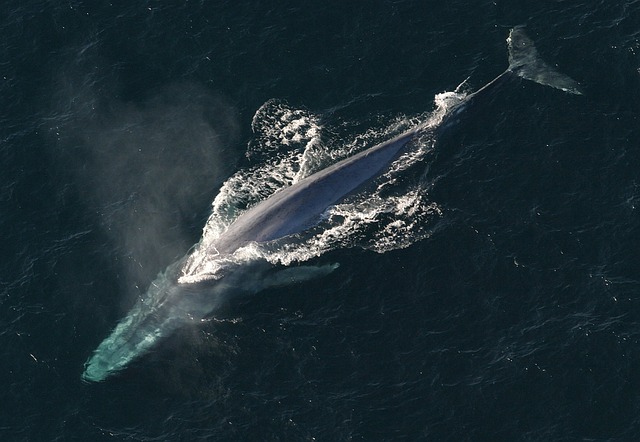
31. The Blue Whale is The Largest Animal In History
Animals are smaller today than they were historically speaking. The largest land animal in prehistoric times was called the Indricotherium, and it was about 40 feet long and was estimated to weigh about 30 tons. The largest living animal on land is the African Bush elephant, which is about 6 tons and considerably smaller. Even one of the most famous prehistoric animals, the megalodon, is believed to have been about 70 feet in length. The blue whale, however, remains the largest animal to have ever lived. The largest on record was about 110 feet long.
Blue whales are mammals that live in the ocean and they can live to be as old as 90. They can weigh as much as 200 tons, but their average weight is closer to 173 tons. The average blue whale is between 98 to 100 feet in length. It can be hard to imagine just how large they are. They are comparable in size to a jumbo jet, or three school buses lined up together. Even just their hearts are unimaginably large, usually about five feet by four feet and weighing as much as 400 pounds. They can swim at speed of up to 20 miles per hour.
32. Sharks Have Survived Five Planetary Extinction Events
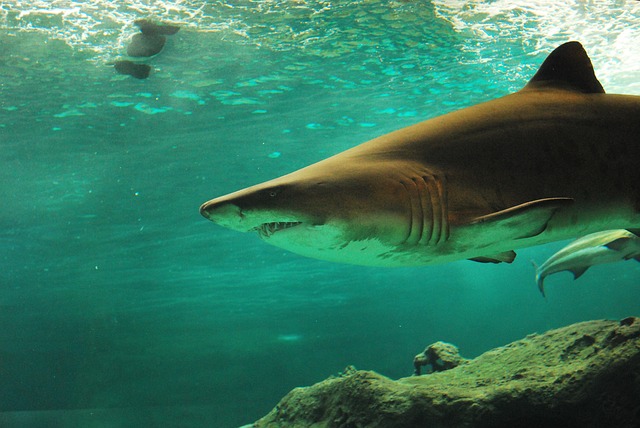
Even though we usually think of lobsters as the cockroach of the sea, the shark has them nearly beat when it comes to staying power. There are considerably fewer different types of sharks today than there used to be; however, they have been around for an incredible amount of time. Some experts estimate that sharks predate dinosaurs, Mount Everest, all of humanity, and even trees. More amazing than being around for more than 400 million years is the fact that sharks have survived all of the mass extinctions that we can observe throughout Earth’s history.
The End Ordovician saw 86% of all species lost; Late Devonian took out 75% of all species; End Permian was the end of 96% of all species; End Triassic wiped out 80% of all species and; End Cretaceous brought an end to 76% of all species. Sharks have managed to survive all of these catastrophic events. Experts aren’t clear on why they were able to do this but, it may have something to do with the fact that many of them can survive on a vegetarian diet even though they are naturally carnivorous. They also tend to congregate around underwater volcanoes.
33. Some Jellyfish Are Essentially Immortal
Jellyfish are terrifying. This is true for all of you who have accidentally encountered one already; however, most people may not know that jellyfish are some of the most dangerous creatures on Earth. Their stings are extremely painful and some of them, such as from the box jellyfish or the Portuguese man o’ war, can kill you. There are many different kinds of jellyfish and they can range in size from just one millimeter all the way up to a horrific 2.2 meters (over six and a half feet), not including their tentacles.
Most adult jellies only live for a few months, some of them as long as three years. There is one type of jellyfish, though, that is considered to be immortal. It has the ability to revert itself back to its polyp stage, which basically starts its life over entirely. It is the only animal that science has discovered that is able to do this. It uses a process called transdifferentiation. Thankfully, this species can only grow to about two-tenths of an inch in size.
34. Rubber Ducks Are Helping Us Understand The Ocean

Due to the lack of knowledge we have about the ocean, it is clear that scientists really need all of the help that they can get. Curiously, rubber ducks are providing some of that help. A total of 28,000 rubber ducks were accidentally dropped into the ocean when they fell off of a container ship in 1992. The ship was traveling from China to Seattle. The ducks became an important tool for one oceanographer. His name is Curtis Ebbesmayer and he asked everyone hitting the beach to report whenever they spotted one of the ducks.
They spent a period of ten years traveling around the world over the ocean, traveling far and wide. Some of them were spotted in Hawaii and some as far away as Europe. This led scientists to discover that objects (and thus, water) took longer to circulate the ocean than they had previously understood them to. Ducks continued to pop up on the beach until the mid-2000s. A study that was done using buoys with trackers on them finally confirmed what the rubber ducks showed Ebbesmayer as recently as 2012.
35. The First Ocean Ever Crossed Was the Atlantic
There is a lot of dispute about who was the first to cross the Atlantic Ocean. However, the Atlantic was the first ocean ever crossed. Abu al-Hasan al-Masudi, a Muslim geographer and historian, documented a voyage from Spain as far back as 889. Spain, at that time, was known as al-Andalus. The voyage reportedly left from the port of Delba, the exact same port that Columbus would sail out of centuries later. Abu Bakr of the Mali empire in West Africa also documented that a fleet of roughly 400 ships was sent out across the Atlantic in 1324; only one ship returned. Columbus is largely considered the first to ever cross the Atlantic, though, and he did so in 1492.
Historical accounts show that it wasn’t until decades later that the Pacific Ocean was crossed for the first time; the first documented crossing of the Pacific was in 1521 by Ferdinand Magellan, also from Spain.
36. The Most Remote Point in the Ocean is Known as Point Nemo
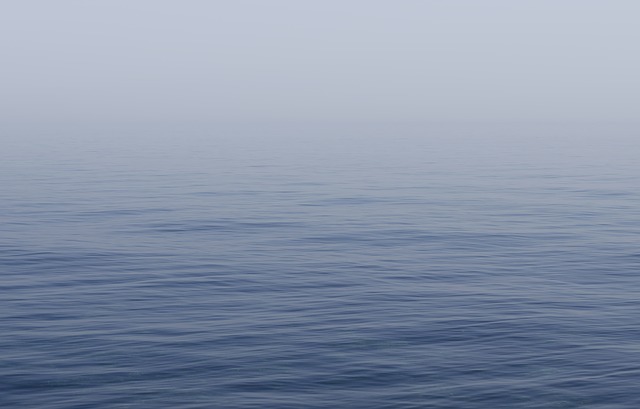
Nemo is a name that almost everyone has become familiar with ever since Marlin had to swim far and wide to rescue his rebellious son in the 2003 animated film Finding Nemo. Nemo is a Latin word meaning “nobody.” However, the alternate etymology is that it comes from the Oromo language and means “The Man.” Regardless of what the particular definition is, a place called Point Nemo is the most remote point on Earth.
It is a mysterious place that is quite literally the middle of nowhere, and it is also known as the “the oceanic pole of inaccessibility.” It is not an island or anything, just a point in the ocean. However, the closest human civilization is over a thousand miles away in any direction. If you were to be at this point, in the middle of the Pacific Ocean, the closest people to you are more likely to be in space than on Earth. It is located in a part of the ocean called the South Pacific Gyre; the rotating current inhibits any nutrient-dense water from flowing to the area. So, it is also right in the middle of “the least biologically active region of the world ocean,” as well.
37. The Ocean Has Internet
Unfortunately, we don’t mean this literally. However, you may not know that there are miles and miles of cables in the ocean. Submarine communications cables have actually been in use since the year 1854 when they were installed for telegraphs. These days, though, those cables help keep the globe connected to the internet. Using these fiber optic cables in the ocean provides much better services than we could provide via satellite. They’re also cheaper and supposed to be more secure than using satellites.
It is estimated that 99% of all data that travels across the web internationally is transmitted by the wires at the bottom of the ocean. There are hundreds of thousands of miles of cables all over the ocean floor. Cables in shallow water are thicker to protect them, but in the deeper parts of the ocean where they won’t be disturbed, these wires can be as thin as markers.
38. There Are Roughly 20 Million Pounds of Gold in The Ocean

Just like anywhere else on Earth, there is plenty of gold lurking in the ocean’s floor that could be mined if there was a safe and cost-effective way to do so. That might not be all that surprising. However, what is surprising is that there is about 20 million pounds of gold dispersed throughout the ocean. A lot of gold has dissolved into the ocean but there is no way to recover it. Some reports say that it is so diluted that the concentration can be measured in parts per trillion. Most concentrations are measured in parts per million, for comparison.
39. Seawater Has a Lower Freezing Temperature
There are some parts of the ocean that are incredibly cold. The average temperature of the seafloor is just above freezing, but the temperatures of water in all parts of the ocean can drop below the magic number of 32 degrees Fahrenheit. Even still, the water doesn’t freeze. If you have ever wondered how this could be possible, it is all about the salinity or the amount of salt in the water.
Salt is a great tool for those of us who are subject to snow and ice in the colder months, it helps keep everything from icing over and trapping us inside. The salt in the ocean does the same thing! Seawater doesn’t freeze until its temperature drops below about 28 degrees Fahrenheit. Some parts of the ocean freeze at varying temperatures because some parts contain more salt than others. Salt causes a scientific phenomenon called freezing point depression. Salt melts ice and helps prevent refreezing. In addition to that, only the water part of the ocean will freeze, leaving the salt behind.
40. Sea Water Can’t (Always) Boil
Salt does strange things to water, as you just read, but water pressure might be even more strange. Typically, water boils at around 212 degrees. When water is salty, such as the water at the surface of the ocean, it takes a slightly higher temperature to make it boil. What many people aren’t really aware of, though, is that the altitude also plays a big role in the temperature. The higher the altitude, the lower the temperature is required to get water to boil. This is because of the way atmospheric pressure affects the ability of water to boil.
Because of the way pressure affects water, the hottest parts of the ocean never boil. Even though hydrothermal vents shoot out water that would completely melt lead, the water at the bottom of the ocean doesn’t boil. These vents can reach temperatures of over 600, 700, and in some cases even 800 degrees. The extreme levels of hydrostatic pressure, measured out around 15,750 pounds per square inch, prevents the water from being able to boil at all.
41. It Is Extremely Dangerous to Drink Sea Water

Drinking water from the ocean would kill you, unquestionably. The water in the ocean contains four times as much salt as all of our other bodily fluids. When you drink water, it enters our bloodstream and is absorbed into the cells by osmosis; your cells try to maintain a balance of water in the blood and inside the cells. Drinking water from the ocean causes extremely high levels of sodium in your blood.
Sodium and chloride can’t leave cells as easily as water can, and your body likes balance. Too much sodium in your blood like this would cause water to rush out of your cells and make them shrink. Your body would try desperately to balance this process out by making you urinate a lot to get rid of all the excess salt. However, because your cells are already going to be dehydrated, this would make you extremely dehydrated very quickly.
If you failed to drink any clean water to reverse what you’ve done, it wouldn’t take long for your blood vessels to constrict and your heart rate to speed up. The short-term effects are things like cramps, thirst, and delirium. Eventually, the lack of critical blood flow to your organs would lead to a coma and eventually, death. Many people lost at sea have tried drinking seawater, and the combination of thirst and delirium makes them drink more, causing them to die.
42. …But It Is Very Safe to Drink Sea Ice
Despite the absolute horror that drinking water from the ocean can cause, sea ice is a totally different story. As you read earlier, whenever seawater actually gets cold enough to freeze, it is only the water that freezes. Salt doesn’t freeze along with it. First-year ice can contain a lot of brine and other things that aren’t exactly good for you, but if you were to thaw multi-year ice from the ocean, it would be totally safe to drink.
In fact, sometimes this type of ice is used as the primary source of drinking water for polar expeditions. This water often has a high pH level, too. This means that it can be very beneficial for you because most of the things we drink other than water are acidic. A lot of people that report being able to “taste” water claim that more alkaline varieties of water have a better taste as well.
43. Tsunamis Can Travel Up to 500 MPH
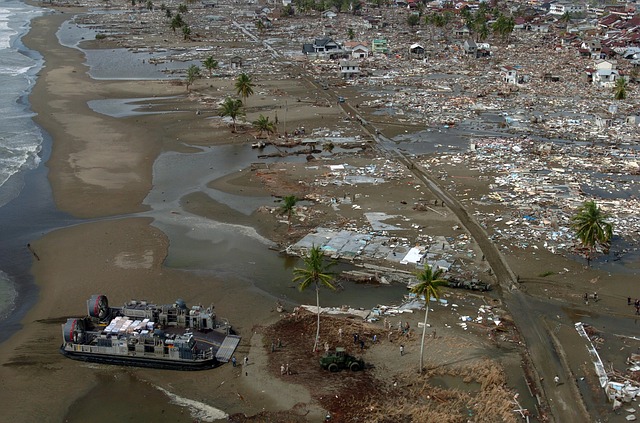
Tsunamis are actually a series of waves and they happen when large volumes of water are displaced. Most of the time, these massive waves are caused by earthquakes but they can also be caused by landslides on the ocean floor or some other type of disturbance. Typical waves have a wavelength of between six and seven feet but the wavelength of a tsunami can be up to 120 miles. Smaller ones can cause seas to rise between 10 and 30 feet but some of them can surge as high as 100 feet.
The disturbances in the water travel across deep water just fine but when they hit shallow water, the seafloor is higher and it pushes the water up to create large surging waves. 80% of all tsunamis occur in the Pacific but they are possible in any body of water, even lakes. In deep water, tsunamis can travel as fast as 500 miles per hour. It isn’t until reaching more shallow waters that it begins to slow down, generally to around 50 miles per hour. Most tsunamis don’t actually break like regular waves and cause huge surges of water onto shore instead. The ones that get large enough to break can devastate coastal areas.
44. The Speed of Sound is Faster in The Ocean

Humans usually hear through something called air conductivity but, we can also hear with bone conductivity. Bone conductivity lets us hear things through the vibrations of the bones in our skull. Underwater, we are forced to rely on bone conductivity because our eardrums typically can’t vibrate because the ear canals fill with water. This is why it’s so hard to hear anything when our heads are underwater. Even though we can’t hear them as well, sounds travel faster underwater.
The speed of sound is typically 343m/s but, the speed of sound in water is as fast as 1,435 m/s.
45. Scuba Diving is Way Safer Than It Seems
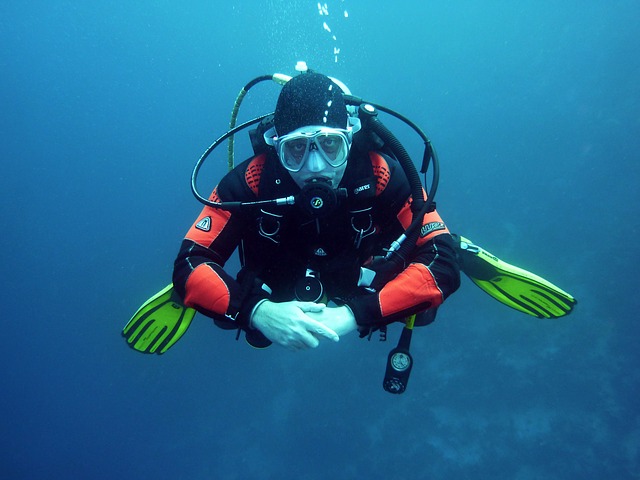
Scuba is actually an acronym that stands for Self-Contained Underwater Breathing Apparatus. Scuba diving is when people go underwater using a scuba tank. These devices are able to function completely independently of the surface supply of oxygen, allowing people to travel deeper underwater, have more freedom of movement, or stay for longer periods of time. Scuba diving allows people to explore the ocean in ways that wouldn’t be possible without it and it is a commonly-enjoyed vacation activity. Some people even pursue it as a more serious/regular hobby.
The amazing fact about scuba diving that you may not be aware of is that it is comparatively safer than some of the most common activities we do on a regular basis. Based on a study of emergency room visits per year, scuba diving is safer than bowling and fishing. There are less than a handful of diving-related deaths each year, with more annual deaths attributed to riding horses, swimming, and even simply jogging.
46. Divers Often Feel Drunk if They Go Too Deep
While there are fewer dangers associated with diving than you may have originally thought, there are still some dangers. One of those is something called nitrogen narcosis, and it causes feelings of drunkenness. The effects of this phenomenon are caused by the increased solubility of gases in the body which is caused by the pressure in the ocean. The effects typically start at just 100 feet into the ocean.
Many seasoned divers refer to nitrogen narcosis as “Martini’s Law.” It is reported that for every ten feet you descend, it has the same effect on the body as drinking a martini on an empty stomach. It is impossible to get used to the effects of pressure on the body no matter how experienced you become with diving; however, the effects are completely reversible once you ascend to shallower depths in the water. At the deeper parts of the water, nitrogen narcosis can impair divers’ abilities to make decisions and focus as well as impairing coordination.
47. Color Perception is Warped in The Ocean
One thing that many people aren’t aware of is that the way we perceive color is very different underwater. The ocean appears blue because of the way it absorbs and reflects light from the sun. The sunlight contains all of the colors on the spectrum and each color has a different wavelength. Shorter wavelengths are not able to penetrate water as effectively.
Red has the shortest wavelength, which is why many deep-sea creatures are red. The red light can’t reach that far so there is nothing to reflect, effectively camouflaging the fish. To the human eye, the color red looks green at some depths underwater and becomes nearly invisible if we were able to go deeper and still be able to see. Those red fish are also invisible to predators that far down, as well. This is why there aren’t as many blue fish in deeper water, they would be easily visible to predators.
48. The Ocean Isn’t Silent (And Science Can’t Explain All The Noise)
Most of the sounds that occur underwater can’t be heard on the surface. Because of that, scientists use a variety of equipment to record sound underwater. It turns out, there are a lot of different sounds that come from the ocean and because of the lack of exploration we’ve done, science can’t explain where all of them come from. One of the most famous of these mysterious sounds was recorded over two decades ago and it is called The Bloop.
It is believed to have originated from an earthquake or an iceberg cracking but it took 11 years to determine that that’s where it came from. There are several other named sounds that still have no explanation like The Upsweep and The Whistle. There are plenty of deep and eerie sounds that happen down at the bottom of the ocean and we seem to be a long way off from figuring out their origin.
49. The Kinetic Energy of The Ocean Could Power The World (And Then Some)
Scientists are still sorting out the process through which we would be able to harvest the energy of the ocean as a renewable power source. Kinetic energy is the energy caused by motion and it is already used to power some devices like watches. It is the energy that something has just from being in motion and, as you know, the ocean never stops moving.
Some experts say that if we could harness just 1% of the kinetic energy in the ocean, it would generate more than enough power to generate electricity for the entire world and we’d still have some left over. As an example, the United States uses an average of about 4,000 terawatt-hours per year. All forms of kinetic energy that we could generate from the ocean have the potential to generate a minimum of 21,100 terawatt-hours per year up to 93,100 terawatt-hours per year.
50. Science And Religion Both Agree That All Life Was Created in The Ocean

While science and religion have a complicated relationship, the fact that the ocean came first is something that they can both agree on. Science has been reporting for a very long time that life began in the ocean. Prokaryotes and eukaryotes formed in the oceans before they formed anywhere else on the planet.
When it comes to Christianity, the ocean is mentioned right away in the Bible. In Genesis 1 verse 2 it says that “The Spirit of God was hovering over the face of the waters.” As you continue reading, in Genesis 1 verse 20, the Bible says “And God said ‘Let the waters swarm with swarms of living creatures.'” So, regardless of how you believe the Earth and all life upon it began, it all started with the ocean.
